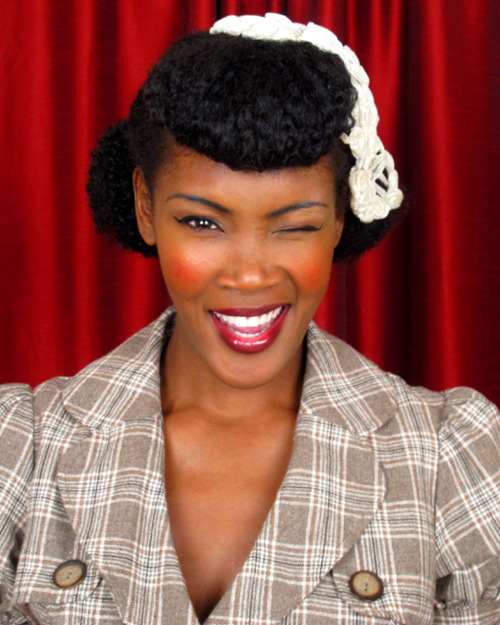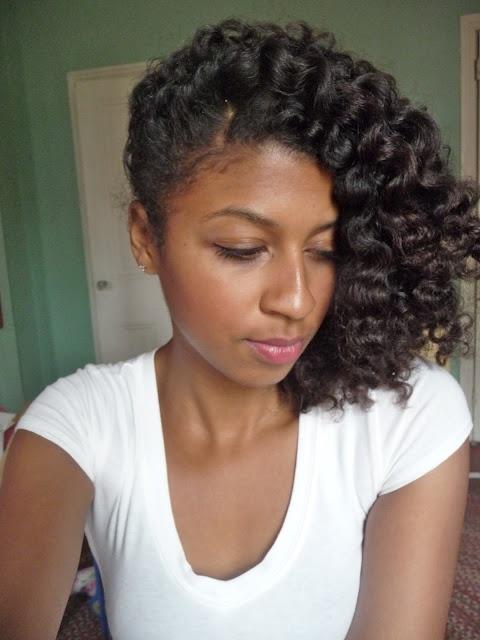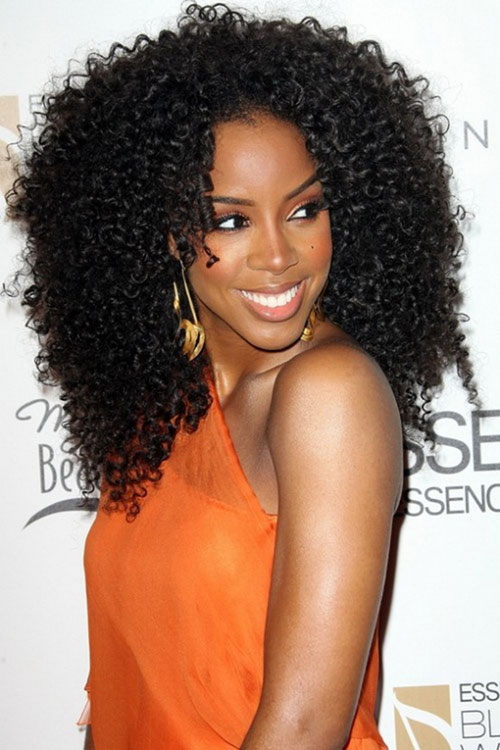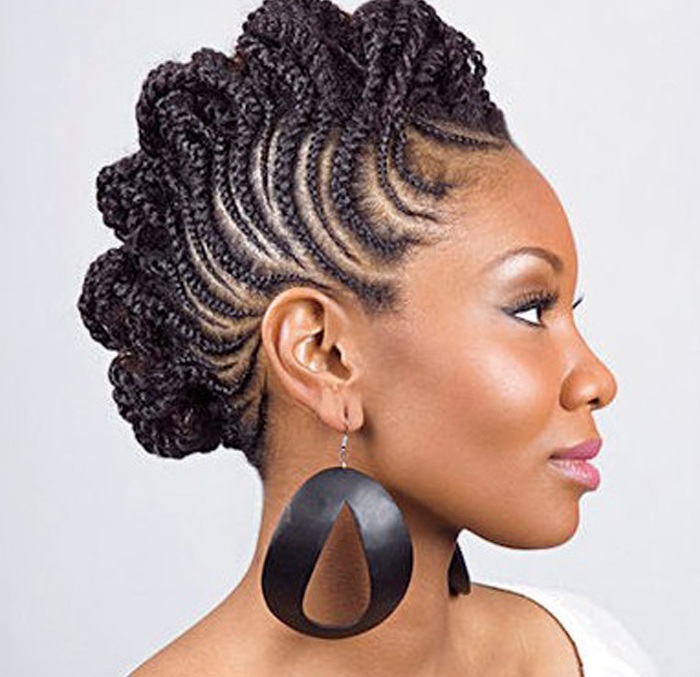Source:- Google.com.pk
Since the beginning of African civilizations, hairstyles have been used to convey messages to greater society. As early as the 15th century, different styles could "indicate a person's marital status, age, religion, ethnic identity, wealth and rank within the community." Unkempt hair in nearly every West African culture was considered unattractive to the opposite sex and a sign that one was dirty, had bad morals or was even insane.
Hair maintenance in traditional Africa was aimed at creating a sense of beauty. "A woman with long thick hair demonstrated the life force, the multiplying power of profusion, prosperity...a green thumb for raising bountiful farms and many healthy children", wrote Sylvia Ardyn Boone, an anthropologist specializing in the Mende culture of Sierra Leone.
In Yoruba culture in West Africa, people braided their hair to send messages to the gods. The hair is the most elevated part of the body and was therefore considered a portal for spirits to pass through to the soul. Because of the cultural and spiritual importance of hair for Africans, the practice of having their heads involuntarily shaved before being sold as slaves was in itself a dehumanizing act. "The shaved head was the first step the Europeans took to erase the slaves’ culture and alter the relationship between the African and his or her hair."
After slavery.
Hair straighteners suggest to blacks that only through changing physical features will persons of African descent be afforded class mobility within African American communities and social acceptance by the dominant culture” (Rooks 1998: 177). At the time, wig manufacturers were the only companies that advertised an African American standard of beauty.
In Winold Reiss’s Brown Madonna, the Virgin Mother is shown with straight hair. Painted toward the beginning of the New Negro movement in 1925, the work showcased the sense of racial pride popular during the 1920s and 1930s. This classically white symbol of purity and virtue was created with dark skin, asserting the value and respectability of the Black race.
This was a time when Blacks were creating their own successes in society and staking out a niche in the northern cities such as Chicago and Harlem. Part of their personal success at this time, however, was their perceived ability to assimilate, which is portrayed by mother’s unnaturally straight hair. Painted lines seem to radiate from the mother’s body, giving her an ethereal and heavenly affect. This type of figure—one with straight hair—was revered by Blacks and posed as an example to follow.
Civil Rights Era[edit]
Angela Davis (right) in 1972 with her influential hairstyle
The Afro, which hit its stride in the 1960s, was an expression of pride, connection, power, revolution and differentiation. The Afro first gained popularity with performers, artists, activists, youth and nationalists.
Young people who did not adopt this trend were for the first time judged and subject to “blacker-than-thou” policing by their peers. African Americans began to use their hair as a way to showcase a link to their African ancestors and Blacks throughout the diaspora. The Afro, in conjunction with the Civil Rights movement, was helping to define black identity (Byrd and Tharps 2001: 51).[5]
Some artists used their actual hair as an expression of art. In David Hammons’s American Costume, he pressed his own body onto paper to create an image of what being African American means and looks like. Like the way he crafted the hair on the work by applying fingerprints to the paper, during the 1960s and 1970s it wasn’t uncommon for Blacks to use chemicals to artificially kink their own hair if it wasn’t big enough.
Young Black Americans were ‘froing their hair in great numbers as a way to emulate the style of the Black Panthers and convey their racial pride. Although the Afro started in New York, it was Angela Davis in Chicago, an associate of the Black Panther Party, who pioneered the Afro as a political statement. In embracing naturalism, she glorified the Black aesthetic and facilitated its power to connect Blacks in Civil Rights movements. Her Afro became especially notorious because of its presence in her “Wanted” ad, as it was her most prominent identifier. It became a way to celebrate African-ness and embrace heritage while politically rejecting European ideals. Men and women in Chicago and beyond wore it as a way to support a proud way of carrying oneself in the world and occupying space.
Similarly, Wadsworth Jarrell’s Liberation Soldiers showcases Afros as almost halos. Combined with the shine present in the men’s coats, the painting conveys the spiritual aspect of trans-African culture. These men were seen as angels not only for their place in the Rights movement but also because of their naturalism and portrayal of Black heritage.
In relation to hair, the time between the 1970s and the 1990s could be described as open and experimental. “Despite occasional political flare-ups, individual choice would increasingly dictate African-American hairstyles in this era”[4] Trendy styles like braids were even adopted by whites, especially after white actress Bo Derek wore them in the movie 10. Although braids, cornrows and dreadlocks were becoming mainstream, they stirred up controversy when worn in the professional sphere.
A man with cornrows
Hip Hop culture in the 1980s created a slew of new trends, one being the “fade” for men. The fade is a hairstyle worn predominantly by black men in which the hair starts off short at the bottom and lengthens as it reaches the top. This style afforded the wearer an opportunity for individuality, as people often cut designs into the back and sides or added different colors to the top [2]
Hip Hop also had an influence on young black women, who now could look to the popular musical artists on TV and album covers for inspiration. Asymmetric cuts like wedges, stacks or finger curls were popular during this time. Interestingly, all of these styles required some form of hair straightening. After the 1970s, men and women tended to turn away from the all-natural looks and began creating their own variety of individualized looks.
Hair styling in African American culture is greatly varied. African American hair is typically composed of tightly coiled curls. The predominant styles for women involve the straightening of the hair through the application of heat or chemical processes.In many cases today, the overuse of heat and chemicals has left some African American women with fairly short and damaged hair.These treatments form the base for the most commonly socially acceptable hairstyles in the United States. Alternatively, the predominant and most socially acceptable practice for men is to leave one's hair natural.
Often, as men age and begin to lose their hair, the hair is either closely cropped, or the head is shaved completely free of hair. However, since the 1960s, natural hairstyles, such as the afro, cornrows, and dreadlocks, have been growing in popularity. Despite their association with civil rights oriented political movements, the styles have attained considerable, but certainly limited, social acceptance.In fact, seventy to eighty percent the customers at Ajes Salon in Chicago go natural, most commonly in the broad set or strong set styles. This harkens back to the Afros seen in Chicago in 1960s, except that "it is more tame than if it were naturally big and curly," said Tena Warren, an employee at the salon.
In another aspect, they learn to adapt to the Caucasian hair tendencies and beauty standards. In that many African Americans have chemically processed or maintain heat processed styles.In constantly changing their natural hair appearance deems their hair as problematic. History shows that society has always viewed black people hair as a problem, in need of fixing. This is in constant display of the media, of hair weaves and heat and chemical products as the social norms of black women. The Caucasian society often holds black hair in the same respects of their majority straight hair, reckoning all hair textures to me uniform. This is a subtle way of exploiting their image is to be wrong in society’s view of beauty. There was a new ban in the United States Army of mostly African American hairstyles. Including dread locks, large cornrows, and twists are now banned. Because they look unkempt, however kempt hair is sense to be straight hair .This is another way of forcing the women to choose between small cornrows or chemically process hair if there natural hair is not long enough to fit into a neat pony tail. Currently in the black community some see their naturally coils, kinks, and curls as a negative problem. As America claims to be a melting pot nation, there is slow acceptance rate of for culturally difference.
Natural Hairstyles For Black Women Hairstyle for Men 2014 for Women For Girls For Boys For Round Face For Short Hair For Long Hair For Wedding Pics
Natural Hairstyles For Black Women Hairstyle for Men 2014 for Women For Girls For Boys For Round Face For Short Hair For Long Hair For Wedding Pics
Natural Hairstyles For Black Women Hairstyle for Men 2014 for Women For Girls For Boys For Round Face For Short Hair For Long Hair For Wedding Pics
Natural Hairstyles For Black Women Hairstyle for Men 2014 for Women For Girls For Boys For Round Face For Short Hair For Long Hair For Wedding Pics
Natural Hairstyles For Black Women Hairstyle for Men 2014 for Women For Girls For Boys For Round Face For Short Hair For Long Hair For Wedding Pics
Natural Hairstyles For Black Women Hairstyle for Men 2014 for Women For Girls For Boys For Round Face For Short Hair For Long Hair For Wedding Pics
Natural Hairstyles For Black Women Hairstyle for Men 2014 for Women For Girls For Boys For Round Face For Short Hair For Long Hair For Wedding Pics
Natural Hairstyles For Black Women Hairstyle for Men 2014 for Women For Girls For Boys For Round Face For Short Hair For Long Hair For Wedding Pics
Natural Hairstyles For Black Women Hairstyle for Men 2014 for Women For Girls For Boys For Round Face For Short Hair For Long Hair For Wedding Pics
Natural Hairstyles For Black Women Hairstyle for Men 2014 for Women For Girls For Boys For Round Face For Short Hair For Long Hair For Wedding Pics
Natural Hairstyles For Black Women Hairstyle for Men 2014 for Women For Girls For Boys For Round Face For Short Hair For Long Hair For Wedding Pics










No comments:
Post a Comment